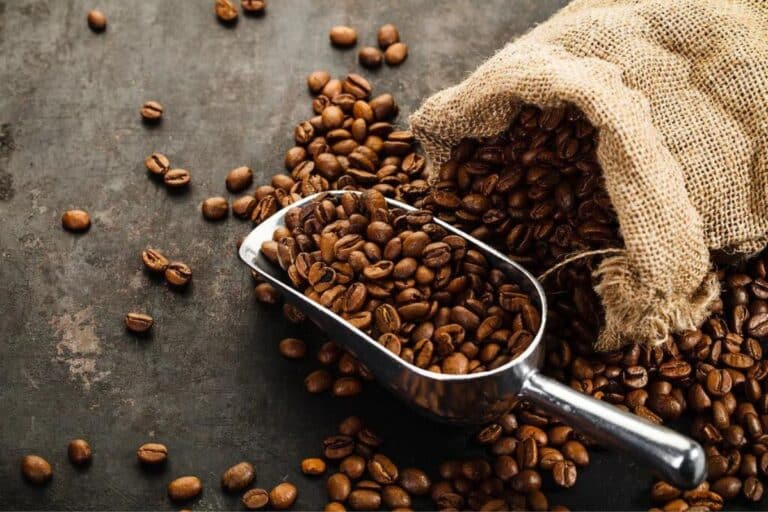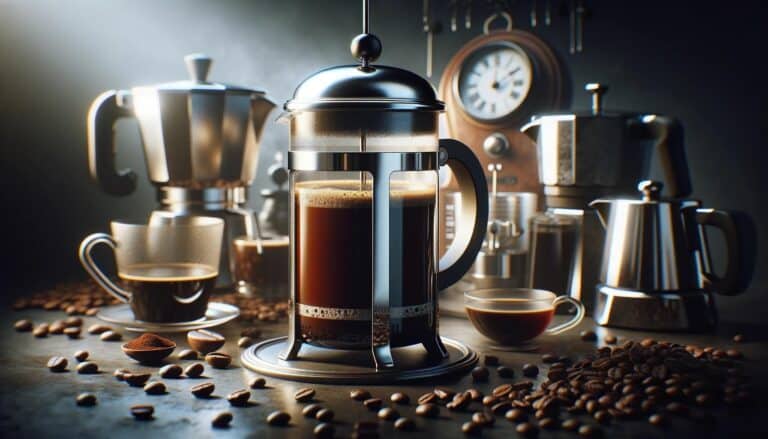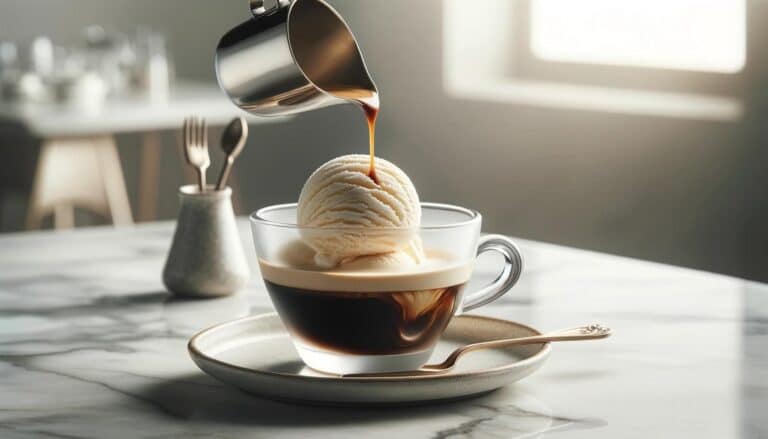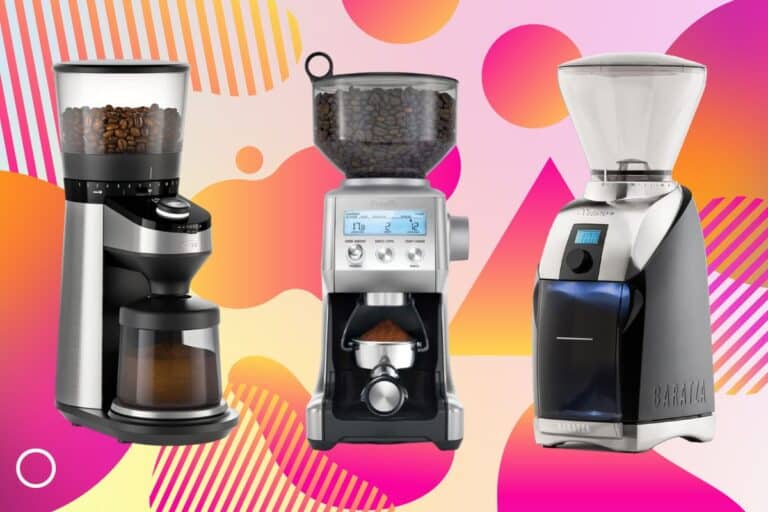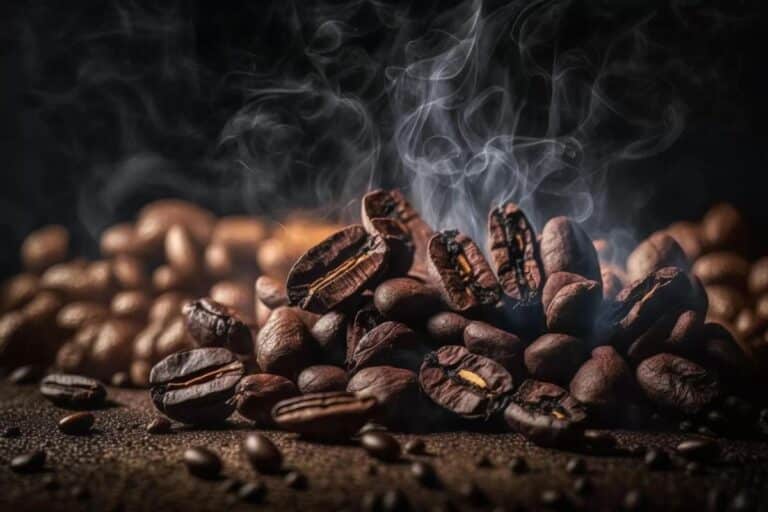Coffee lovers everywhere, from those who enjoy a casual cup to the enthusiasts, often find themselves debating a hot topic as the smell of fresh coffee fills the air: Do Darker Roasts Have More Caffeine? Many people think that the darker the coffee roast, the more caffeine it has because of its stronger flavor and darker color. This belief makes some choose their morning coffee based not only on how it tastes but also on the energy boost they think it will give them.
But, the truth about how roast level affects caffeine content is not as simple as many believe. Even though roasting changes the flavor, acidity, and look of the coffee bean, it doesn’t really change the caffeine content in the way most people think. With so many coffee drinkers interested in caffeine content, it’s important to look at what science says about this topic.
This article will clear up the myths about caffeine in different coffee roasts. We’re going to talk about how coffee is roasted, what caffeine is all about, and what really makes a difference in how much caffeine your coffee has. Whether you prefer dark roast for its bold flavors or light roast for its subtle tastes, understanding the real deal between roast level and caffeine will help you pick your coffee better. That way, every cup is not just tasty but also matches your caffeine needs and preferences.
Do Darker Roasts Have More Caffeine?
Darker roasts are often thought to have more caffeine due to their strong flavor, but this is a misconception. When measuring coffee by volume, darker roasts may actually contain slightly less caffeine because they are less dense after losing moisture during roasting. However, if measured by weight, all roasts have roughly the same caffeine content, making the choice between them a matter of taste rather than caffeine concentration.
Understanding Coffee Roasting
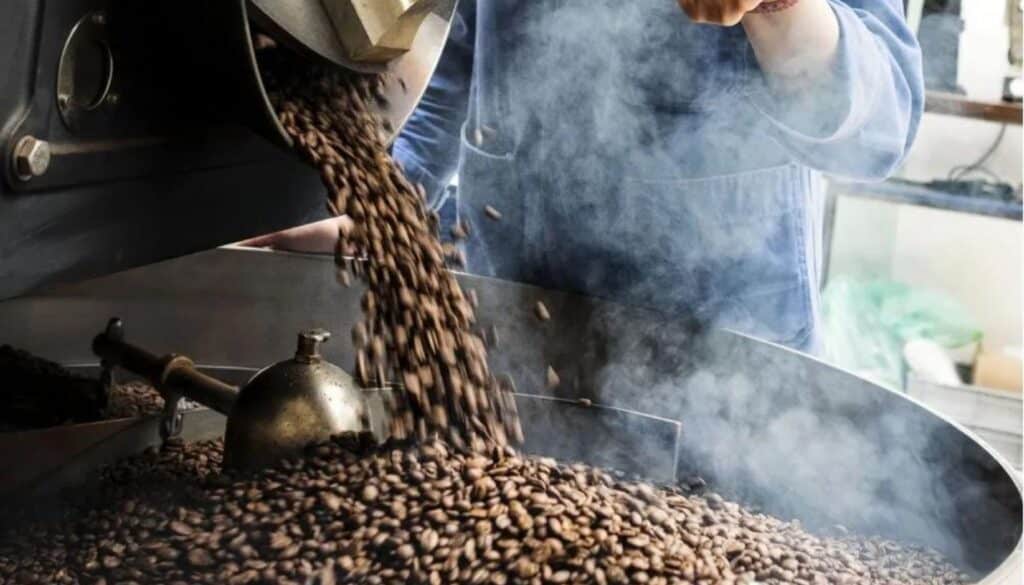
Roasting coffee turns green, raw beans into the flavorful, aromatic beans we love to grind and brew. This process, a mix of art and science, changes the beans a lot, affecting their taste, smell, and even caffeine content.
The Coffee Roasting Process
Roasting coffee involves a precise mix of timing and temperature control. We start with raw beans, heating them in a roaster. They change color from green to yellow and then to various shades of brown, depending on how dark we want the roast. As the beans heat up, they lose water, grow bigger, and hit two key points called the “first crack” and the “second crack.” These sounds mark important stages in the bean’s development.
The Stages of Roasting: Light, Medium, and Dark
- Light Roasts: We roast these beans to temperatures between 356°F and 401°F, usually stopping right after the first crack. These beans are light brown, more acidic, and keep the original flavors that reflect where they came from. You won’t see oil on the surface of light roasts.
- Medium Roasts: We roast these beans a bit more, reaching temperatures between 410°F and 428°F. We take them out of the heat sometime around the first crack, but before the second. Medium roasts strike a balance in flavor, aroma, and acidity, tasting a bit sweeter than light roasts. They’re medium brown and have a fuller body than light roasts.
- Dark Roasts: We roast these beans even more, past the second crack, to temperatures up to 464°F or more. They turn dark brown and shiny with oil on the surface. The acidity drops a lot, making the flavors bold and strong, sometimes bittersweet or smoky, as the roast flavor takes over the original bean flavor.
How Roasting Changes Flavor and Acidity
The roast level changes the coffee’s flavor a lot. Light roasts bring out the coffee’s original, complex flavors, like floral and fruity notes. As we roast the beans longer, these delicate tastes fade into richer, caramelized sugars and strong roast flavors. The coffee’s acidity, which makes it taste bright or sharp, gets less intense as the roast gets darker. This makes the coffee smoother but can also make it taste more bitter.
Factors that Influence Caffeine Levels in Coffee
While the roasting process impacts flavor and acidity, its effect on caffeine content is less direct. Two primary factors influence the caffeine levels in coffee more significantly than the roast level:
- Origin of the Beans: The geographical origin of coffee beans can affect their natural caffeine content. Different soil types, altitudes, and climates influence the growth of the coffee plants and the biochemical composition of the beans, including their caffeine levels.
- Species of Coffee Plant: There are two main species of coffee plants cultivated for consumption: Arabica and Robusta. Arabica beans, which are prized for their smooth, complex flavor profiles, generally contain less caffeine than Robusta beans. Robusta beans, on the other hand, have a stronger, more bitter taste and higher caffeine content, making them popular in blends that prioritize a caffeine kick, such as those used for espresso.
While the roast level does alter many aspects of the coffee bean, its influence on caffeine content is minor compared to the bean’s origin and species. Understanding these factors can help coffee drinkers choose their beans more wisely, based on both the flavor profile and the desired caffeine strength.
Debunking Myths: Caffeine Content in Dark vs. Light Roasts
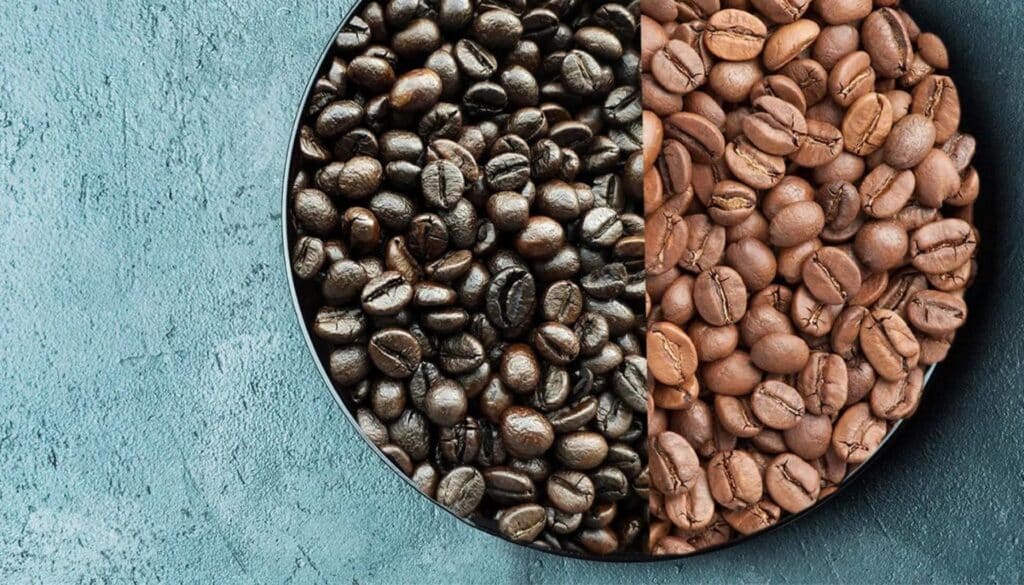
A lot of coffee drinkers think that dark roast coffee has more caffeine because it tastes stronger and looks darker. But when we dive into the science of how coffee is roasted and how caffeine works, we find a different story.
Caffeine Stays Stable When Coffee Is Roasted
Caffeine doesn’t really change much when coffee beans are roasted. It can handle the high heat needed to turn green coffee beans into light, medium, or dark roasts. Since roasting mostly changes the beans’ moisture and flavor without affecting the caffeine, the amount of caffeine in the coffee stays pretty much the same. Caffeine’s structure doesn’t break down until it reaches temperatures way hotter than what we use for roasting coffee.
Myths About Dark Roasts and Caffeine
Many people wrongly believe that dark roast’s strong flavor means it has more caffeine. But actually, the bolder taste comes from roasting the beans longer, which makes their flavors deeper and reduces their acidity, not from more caffeine.
Another wrong idea is that dark roast beans, which get bigger and lose moisture as they roast, have more concentrated caffeine. But in reality, each bean has about the same amount of caffeine, no matter the roast.
What Research Shows
Research comparing light and dark roasts shows that there’s hardly any difference in their caffeine levels. How you measure caffeine can affect this, though. If you measure using volume (like with a scoop), light roast coffee might seem to have more caffeine because its beans are denser. But if you weigh your coffee, the caffeine levels between light and dark roasts are pretty much the same. This happens because dark roasts lose moisture and get bigger, balancing things out.
Studies also show that the type of coffee bean (Arabica vs. Robusta) makes a bigger difference in caffeine content than the roast level. Arabica beans, the type most often used in fancy coffee, have less caffeine than Robusta beans, which are stronger and used in espresso for their higher caffeine level.
So, the idea that dark roast coffee has more caffeine doesn’t really match with what science tells us. The roasting process changes the beans’ taste and look way more than it changes how much caffeine they have. When picking coffee for its caffeine, coffee drinkers should think about what flavors they like and what type of bean they want, not just the roast level.
Measuring Caffeine: The Challenges
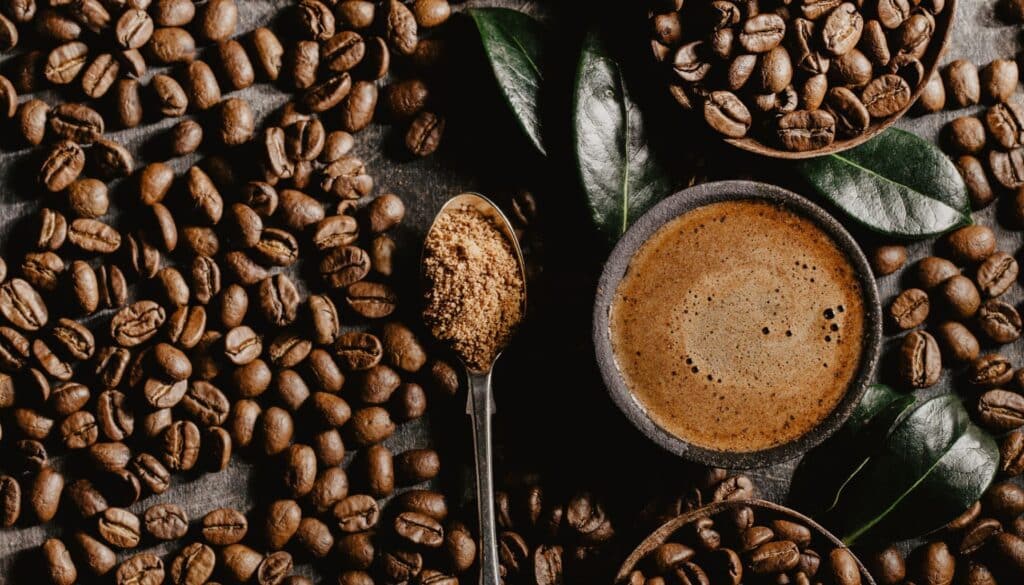
Determining the exact caffeine content in a cup of coffee is more complex than it might seem at first glance. Several variables influence caffeine levels, making it difficult to pinpoint a precise amount for each brew. This complexity stems from the inherent nature of coffee preparation and the physical properties of coffee beans themselves.
Why Measuring Caffeine Content Isn’t Straightforward
- Variability in Beans: Even within a single batch of coffee beans, there can be significant variability in caffeine content due to differences in bean size, density, and the exact blend of beans used. This natural variation means that two cups of coffee prepared in the same way could have differing amounts of caffeine.
- Extraction Efficiency: The process of extracting caffeine from coffee beans into water is influenced by numerous factors, including temperature, water quality, and the presence of other compounds within the beans. The efficiency of this extraction process can vary, affecting the final caffeine content.
- Roasting Variability: Although the roasting process does not significantly degrade caffeine, the physical changes in the beans can affect how caffeine is extracted during brewing. Darker roasts may yield slightly less caffeine in some brewing methods due to their larger size and more porous structure.
The Role of Brewing Method and Grind Size
- Brewing Method: Different brewing methods extract caffeine at different rates. For instance, espresso, despite its small serving size, uses high pressure to quickly extract caffeine, resulting in a concentrated dose. In contrast, drip or pour-over coffee methods might extract caffeine more slowly, affecting the overall content in the final cup.
- Grind Size: The size of the coffee grounds can significantly impact caffeine extraction. Finer grinds increase the surface area in contact with water, potentially leading to more caffeine being extracted. Conversely, coarser grinds result in less surface area and might yield coffee with lower caffeine content under the same brewing conditions.
The Impact of Serving Size
Serving size plays a crucial role in the amount of caffeine in a coffee drink. Espresso shots are small but highly concentrated, while a standard mug of drip coffee is larger but might have a lower concentration of caffeine per ounce. However, the total caffeine content in the larger serving of drip coffee can surpass that of a single shot of espresso due to the greater overall volume.
Furthermore, the concept of a “standard” serving size can vary significantly from one coffee shop to another, adding another layer of complexity to caffeine content comparisons. Variations in the amount of coffee used, the water-to-coffee ratio, and even the specific serving sizes offered by different establishments mean that caffeine content can vary widely from one cup of coffee to the next, even if the same type and roast of bean are used.
In summary, accurately measuring the caffeine content of coffee is fraught with challenges due to the variability in coffee beans, brewing methods, grind sizes, and serving sizes. These factors all interact to influence the final caffeine content, making it difficult to provide precise measurements for every cup. For those concerned about caffeine intake, understanding these variables can help manage expectations and make more informed choices regarding their coffee consumption.
The Reality of Caffeine Content
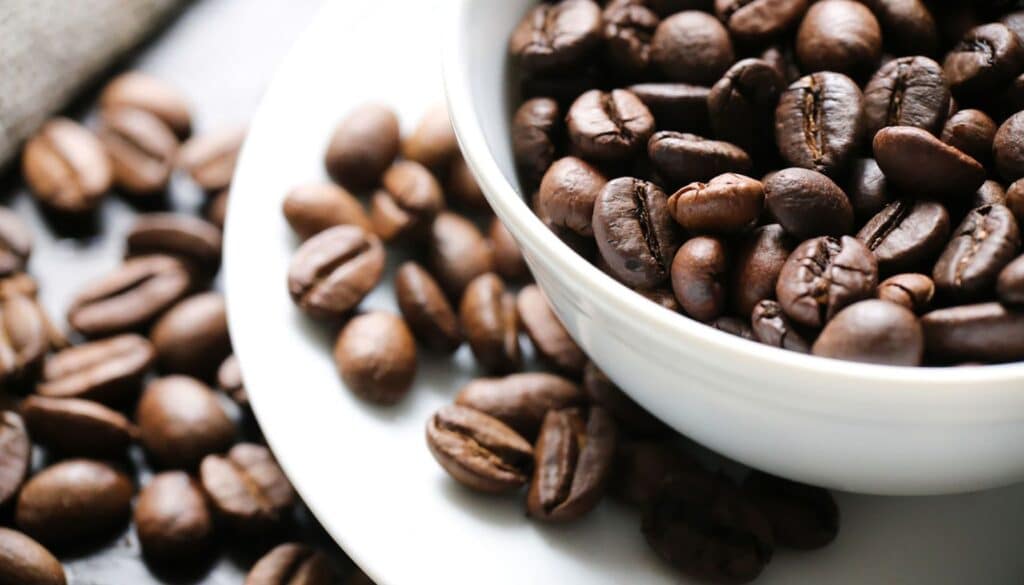
The caffeine content in coffee has been a subject of various myths and misconceptions, particularly regarding the impact of the roast level. Understanding the reality behind caffeine content involves examining how different factors, such as roast degree, measurement methods, and physical changes in beans, affect the caffeine you consume in your daily cup.
Comparison of Caffeine Content in Light, Medium, and Dark Roasts
Contrary to popular belief, the difference in caffeine content among light, medium, and dark roasts is minimal when considering the caffeine per bean. The primary determinant of caffeine content is the type of coffee bean (Arabica vs. Robusta), not the roast level. However, the roasting process does affect the bean’s size and density, which can lead to variations in caffeine content when measured by volume or weight.
- By Weight: If you measure your coffee by weight, which is the more precise method to ensure consistency in coffee strength, the differences in caffeine content between light and dark roasts are negligible. Since caffeine is stable during the roasting process, a gram of coffee, regardless of roast level, will contain roughly the same amount of caffeine.
- By Volume: When measuring coffee by volume (e.g., using a scoop), light roast beans, being denser than dark roast beans, will yield slightly more caffeine because fewer beans are needed to fill the scoop. Conversely, dark roast beans are larger and less dense, so you’ll need more beans to fill the same scoop, which might slightly reduce caffeine content in the brewed cup.
How Roasting Affects Bean Size and Density
The roasting process causes physical changes in coffee beans:
- Size Increase: As coffee beans are roasted, they lose moisture and expand in size. Darker roasts experience more significant expansion due to the longer roasting time.
- Density Decrease: The loss of moisture and the breakdown of cellular structure in the beans result in a decrease in density. Dark roast beans are therefore less dense than their light roast counterparts.
These changes impact how beans measure up when using volume as a metric. A scoop of dark roast beans will have less mass (and potentially less caffeine) than a scoop of light roast beans due to these differences in density and size.
Practical Implications for Coffee Drinkers
For coffee drinkers concerned about their caffeine intake, understanding these nuances is essential. Here are some practical takeaways:
- Measurement Method Matters: Consider measuring your coffee by weight rather than volume for a more consistent caffeine intake, especially if you switch between roast levels frequently.
- Brewing Method and Preferences: Your brewing method and how strong you like your coffee will also impact caffeine content. Espresso generally delivers caffeine more concentrated, while drip coffee provides caffeine in a more diluted form but possibly more total caffeine due to larger serving sizes.
- Personal Experience: Pay attention to how different coffees affect you personally. Due to variations in bean origin, processing, and brewing, your experience with the caffeine content in coffee may vary.
While roast level does influence the physical characteristics of coffee beans, its impact on caffeine content is more about measurement nuances than actual chemical changes in caffeine levels. By understanding these factors, coffee enthusiasts can better navigate their caffeine consumption according to their preferences and needs.
Considerations for Choosing Your Roast
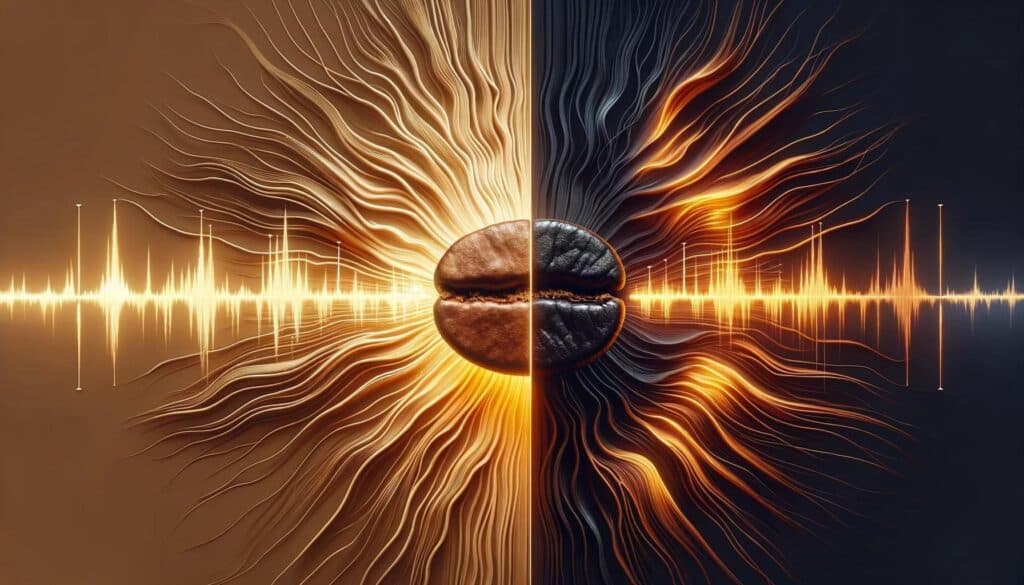
When selecting the perfect coffee roast, many drinkers weigh their flavor preferences against desired caffeine levels. However, understanding the nuances of coffee roasting can reveal that there’s more to consider, including health benefits and the impact of caffeine sensitivity. Here’s how to navigate these considerations to find your ideal coffee roast.
Flavor Preferences vs. Caffeine Content
- Flavor Profiles: Light roasts offer a brighter acidity and retain more of the original flavors of the coffee bean, which can range from fruity to floral, depending on the bean’s origin. Medium roasts provide a balanced flavor, aroma, and acidity, making them a versatile choice. Dark roasts deliver a bold, smoky flavor with reduced acidity, appealing to those who enjoy a robust cup of coffee.
- Caffeine Misconceptions: As discussed, the caffeine content does not significantly differ across roast levels when measured by weight. Therefore, choosing a roast based on flavor preferences does not necessarily mean compromising on caffeine intake. For those measuring by volume, light roasts may offer slightly more caffeine, but this difference is minor and should not be the sole factor in roast selection.
Health Benefits of Different Roasts
- Antioxidants: All coffee roasts contain antioxidants, but the type and level can vary. Light roasts may have higher levels of chlorogenic acids, which have been associated with health benefits such as reduced inflammation and blood pressure. Dark roasts, on the other hand, have been shown to contain higher concentrations of certain antioxidant compounds that develop during the roasting process.
- Acidity and Digestibility: Lighter roasts tend to be more acidic, which can affect those sensitive to acid. Dark roasts are less acidic and may be easier on the stomach, though they contain more N-methylpyridinium (NMP), a compound that can make them more digestible for some people.
Tips for Selecting Coffee Based on Your Caffeine Sensitivity and Taste Preference
- Know Your Caffeine Sensitivity: If you’re sensitive to caffeine, consider moderating your intake by adjusting the amount of coffee used, opting for smaller servings, or trying a half-caff blend regardless of the roast level.
- Experiment with Different Roasts: Given that flavor and health benefits vary more significantly across roasts than caffeine content, try a range of roasts to discover which profiles you enjoy most and how they affect your body.
- Consider Brewing Methods: Some brewing methods, like espresso or French press, can extract different flavor profiles and caffeine levels from the same coffee compared to drip or pour-over methods. Experimenting with brewing methods can also help tailor your coffee experience.
- Measure by Weight for Consistency: To maintain consistent caffeine intake while exploring different roasts and flavors, consider measuring your coffee grounds by weight rather than volume.
- Consult with Experts: Don’t hesitate to ask baristas or coffee roasters questions about their offerings. They can provide valuable insights into the flavor profiles, caffeine content, and origins of their coffee, helping you make an informed decision based on your preferences and sensitivities.
Selecting the right coffee roast involves balancing flavor preferences, caffeine content considerations, health benefits, and personal sensitivity to caffeine. By exploring different roasts and preparation methods, coffee lovers can enhance their drinking experience while catering to their individual needs and tastes.
Conclusion
Diving into the world of coffee roasts and their caffeine levels gives us some cool facts that clear up common myths and make our coffee times even better. When coffee fans know these details, they can pick their daily coffee with confidence.
Here’s What We Found About Caffeine in Different Roasts
- Caffeine Doesn’t Change Much: Whether you choose a light, medium, or dark roast, the caffeine amount stays pretty much the same when you measure it by weight. This fact busts the myth that dark roasts have more caffeine.
- How You Measure Makes a Difference: Sometimes, people think different roasts have different caffeine levels because of how they measure the coffee (by volume or by weight). Light roasts can seem to have more caffeine per scoop since they’re denser.
- The Coffee Bean and How You Make It Count More: The kind of coffee bean (Arabica vs. Robusta) and how you brew your coffee affect the caffeine level more than whether the roast is light or dark.
Tips for Coffee Lovers on Choosing Roasts
When picking a coffee roast, think about the taste and flavors you like best, not so much about the caffeine. Knowing that the caffeine level doesn’t really change with the roast means you can just go for what tastes good to you—maybe the fruity taste of a light roast or the strong, smoky vibe of a dark roast.
Why Not Try Different Roasts?
Coffee is all about personal taste and trying new things. We encourage coffee lovers to step out of their comfort zone and explore different roasts. Playing around with various roasts and ways to brew your coffee can help you find that perfect mix of flavor and caffeine that’s just right for you.
Coffee offers a wide array of choices, each with its unique flavor and story. By learning more and trying new things, coffee drinkers can deepen their love for this awesome drink, enjoying every cup and every sip even more.
